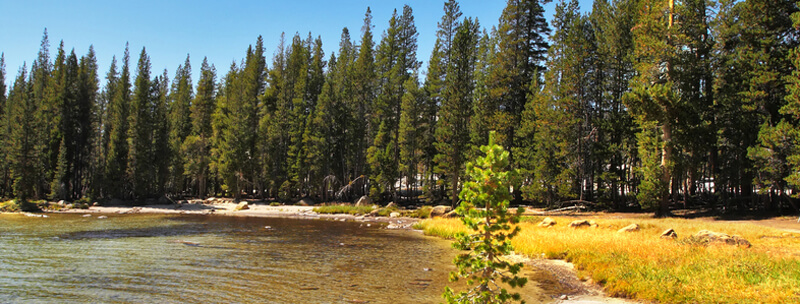On December 30, 2022, at a time that can only be described as temporally adjacent, even actually abutting, the highly anticipated decision from the Supreme Court in Sackett v. EPA, the U.S. Environmental Protection Agency (“EPA”) and the Army Corps of Engineers (“ACE”) submitted for publication in the Federal Register a joint final rule called “Revised Definition of the ‘Waters of the United States’” (the “WOTUS Rule”) under the Clean Water Act (“CWA”). The WOTUS Rule becomes effective sixty days after its publication.
The 514-page WOTUS Rule aims to define “the scope of waters protected under the [CWA],” thus providing clarity regarding the jurisdictional scope of the CWA for the regulated community and the public. Specifically, under the WOTUS Rule, EPA and ACE interpret the “waters of the United States” to include: (1) traditional navigable waters; (2) impoundments and tributaries of traditional navigable waters; (3) wetlands “adjacent” to traditional navigable waters and to impoundments and tributaries of traditional navigable waters; and (4) certain intrastate waters.
Regulatory clarity under the CWA historically has proven elusive with regard to the scope of jurisdiction over tributaries of navigable waters and adjacent wetlands. Whether or not the WOTUS Rule will achieve such clarity remains to be seen. Additionally, aspects of the WOTUS Rule concerning the scope of jurisdiction over non-traditional navigable waters such as tributaries and wetlands are likely to be controversial and challenged in court. In particular, in Sackett, the Justices are currently considering the appropriate test by which to determine whether wetlands fall under CWA jurisdiction.
Regulatory agencies and the courts have struggled to define the “waters of the United States” since Congress initially included the phrase as the definition of the term “navigable waters” under the CWA. As early as 1974, ACE initially offered an interpretation that limited jurisdiction to traditional navigable waters. However, EPA and reviewing courts applied a broader definition of the “waters of the United States” that included navigable waters, their tributaries, interstate waters, and intrastate waters that touch on interstate commerce. In a 1977 rulemaking, the ACE revised its previously narrow interpretation to reflect the broad application provided by EPA and the courts.
The Supreme Court first weighed in on the permissible scope of “waters of the United States” in 1985 in United States v. Riverside Bayview Homes, Inc. Conducting an early Chevron review (as that case had been decided only about a year earlier), the Court unanimously held that the ACE was reasonable in interpreting wetlands adjacent to traditional navigable waters, which “function as integral parts of the aquatic environment,” as included under the definition of “waters of the United States.” Later, in 2001, the Court tempered the scope of the CWA in Solid Waste Agency of Northern Cook County v. U.S. Army Corps of Engineers (a/k/a, “SWANCC”) in which it overturned the “Migratory Bird Rule,” which had extended CWA jurisdiction to intrastate waters that are used as habitat by migratory birds.
The muddled plurality decision in Rapanos v. United States followed in 2006. In that case, a four-Justice plurality interpreted “waters of the United States” as including “relatively permanent, standing or continuously flowing bodies of water” connected to traditional navigable waters, and wetlands with a “continuous surface connection” to those waters. In a concurring opinion, Justice Kennedy offered that “waters of the United States” includes water or a wetland that possesses a “significant nexus” to traditional navigable waters. A four-Justice dissent concluded that “waters of the United States” encompass tributaries and wetlands that satisfy either of these competing tests.
After Rapanos, the definition of “waters of United States” entered an extended period of regulatory limbo between different administrations. In 2015 the Obama Administration tried its hand at defining “waters of the United States” under the “Clean Water Rule,” 80 FR 37054, which the Trump Administration later repealed, 84 FR 56626. In 2020, EPA and ACE under the Trump Administration issued the “Navigable Waters Protection Rule,” 85 FR 22250, which was vacated or remanded by at least six reviewing courts.
The WOTUS Rule, per its preamble, is “consistent with the general framework of the 1986 regulations” (which “have largely been in place since 1977”). The preamble offers further that “the concept of adjacency and the significant nexus standard create separate, additive limitations that work together to ensure that such wetlands are covered (i.e., jurisdiction under the [CWA]) when they have the necessary relationship to other covered waters.” Query as to whether the Court’s anticipated Sackett decision concerning the scope of CWA jurisdiction will agree with the agencies and apply these “additive limitations” in interpreting “waters of the United States.”
If you have any questions about this post, please contact the author Jordan M. Asch or any member of the Environmental Group.




